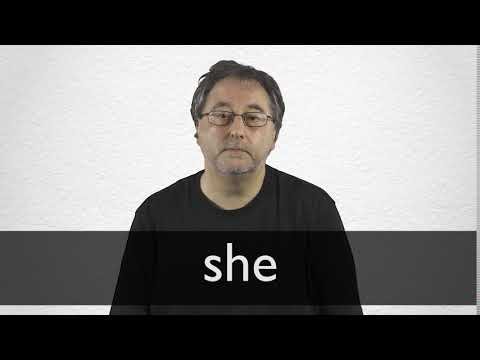She is “ela” in Portuguese. The beauty of language lies in its ability to encapsulate nuances and cultural richness within mere words. Understanding how to express simple phrases like “what is she” in different languages opens up a doorway to a whole new world of communication. In Portuguese, the word for “she” holds within it a history of stories, emotions, and connections unique to that language. Exploring these linguistic intricacies can enrich our understanding of the world and our interactions with those around us.
What is “She” in Portuguese?
Are you curious to learn about how to say “she” in Portuguese? You’re in the right place! In this article, we’ll delve into the fascinating world of the Portuguese language and explore the various nuances of referring to the female gender. Whether you’re a language enthusiast, a student, or just curious about different languages, this guide will provide you with a comprehensive understanding of how to express “she” in Portuguese.
The Basics of Portuguese Pronouns
Before we dive into the specific translation of “she” in Portuguese, let’s take a moment to understand the basics of pronouns in this beautiful language. Pronouns are words used to replace nouns in a sentence to avoid repetition and make communication smoother.
In Portuguese, pronouns are classified into different categories based on gender, number, and formality. The pronouns used to refer to the third person singular feminine are particularly interesting, as they often reflect the rich cultural heritage of the language.
Exploring the Portuguese Word for “She”
So, what is “she” in Portuguese? The word for “she” in Portuguese is “ela.” This simple yet elegant word encapsulates the essence of femininity in the Portuguese language.
When you want to talk about a female subject or refer to a woman, you can use the word “ela” to replace her name or a previously mentioned noun. For example, if you want to say “She is a doctor,” in Portuguese, you would say “Ela é médica.”
Using “ela” in Different Contexts
The beauty of language lies in its versatility and the ability to adapt to various contexts. In Portuguese, the word “ela” can be used in a wide range of situations, from casual conversations to formal settings.
In everyday conversation, you can use “ela” to talk about a friend, a family member, or even a fictional character. It adds a personal touch to your sentences and helps you connect with others on a deeper level.
In more formal settings, such as business meetings or academic presentations, using “ela” shows respect and professionalism. It demonstrates your command of the language and your ability to communicate effectively in different environments.
The Cultural Significance of Gender in Portuguese
One fascinating aspect of the Portuguese language is the emphasis on gender in pronouns. Unlike English, where pronouns are mostly gender-neutral, Portuguese assigns specific pronouns based on the gender of the subject.
This emphasis on gender reflects the cultural values and societal norms of Portuguese-speaking communities. It highlights the importance of gender identity and the role of women in language and society.
By understanding how to use pronouns like “ela” in Portuguese, you not only improve your language skills but also gain insight into the cultural nuances of the Portuguese-speaking world.
Practice Makes Perfect
Like any language skill, mastering the use of pronouns in Portuguese requires practice and patience. One of the best ways to enhance your understanding of how to use “ela” in Portuguese is to engage in conversations with native speakers.
Whether you’re practicing with a language partner, attending a Portuguese language class, or immersing yourself in Portuguese-speaking communities, remember that every interaction brings you closer to fluency.
Fun Ways to Practice Using “ela”
To make learning more enjoyable, try incorporating Portuguese into your daily routine. Watch Portuguese movies or TV shows with subtitles, listen to Portuguese music, or follow Portuguese social media accounts to expose yourself to the language.
You can also use language learning apps, attend cultural events, or join online language exchange groups to practice using “ela” in different contexts. The key is to stay curious, be open to making mistakes, and celebrate your progress along the way.
In conclusion, understanding how to say “she” in Portuguese opens up a world of linguistic and cultural exploration. The word “ela” not only represents the feminine gender but also embodies the beauty and complexity of the Portuguese language.
By delving into the nuances of Portuguese pronouns and practicing their use in various contexts, you can enhance your language skills and deepen your connection to the Portuguese-speaking world.
So, the next time you want to refer to a female subject in Portuguese, remember to use the word “ela” with confidence and grace. Embrace the richness of the language, embrace the culture, and let your journey to mastering Portuguese pronouns be filled with joy and discovery!
CAN YOU SPEAK ANOTHER LANGUAGE? #translate #translatethis #portugal #portuguese #language
Frequently Asked Questions
What is the translation of “she” in Portuguese?
In Portuguese, the translation of “she” is “ela.”
How do you say “she” in Portuguese?
The word for “she” in Portuguese is pronounced as “eh-lah.”
What is the equivalent of “she” in the Portuguese language?
The equivalent term for “she” in Portuguese is “ela,” which is used to refer to females.
Final Thoughts
In conclusion, “what is she in Portuguese” translates to “o que é ela em português”. Understanding basic translations can enhance language skills and cultural appreciation. Embrace the beauty of linguistic diversity by exploring simple phrases in different languages. Discovering equivalents like “she” in various tongues enriches global communication and promotes connection. Keep expanding your language repertoire to foster cross-cultural understanding and meaningful interactions.

